“The future is already here – it’s just not evenly distributed,” goes the clichéd [William Gibson] quote. Growing up on all the Cyberpunk literature and spending a more-than-healthy amount of time obsessing over [Fred Gallagher’s] Megatokyo series, I always imagined Japan to be at the very tail of this distribution. The place where the Future lives. Though it has been decades since the Bubble burst, and there’s no way this could still be the case, there was something romantic about believing it just might be. Thus, I opted for keeping the dream alive and never actually visited the place.
Not until a few weeks ago — [Bilke], one of our crazy sysadmin guys that keeps Hackaday.io alive, made me do it. He found these cheap tickets from LA, and the next thing you know – we were flying out for a 48-hours-in-Tokyo weekend. With no time to prepare, we reached out to [Akiba] from Freaklabs and [Emery] from Tokyo Hackerspace for some tips. By the time we landed, emails were waiting for us, with our full schedule completely worked out. It’s great to know that no matter where you are, there’s always a friendly local hacker willing to help.
Past the immigration, we took the JR Narita Express line into to the City that Friday evening. From there we grabbed a taxi because we couldn’t understand a word in katakana but then we hopped the JR Yamanote Metro line once we had figured things out. We checked out all the major places we had ever heard of (Shinjuku, Shibuya, Roppongi, Ginza…) because the jet lag was not letting us sleep anyway.
Sometime way past midnight, it hit me – Future Shock. But this was the kind I never expected…
It’s as if you were hoping to land somewhere on the opening pages of Neuromancer, but ended up in the middle of a Studio Ghibli movie instead. While all the neon and tech gimmicks seemed to be there, the future they’re portraying feels strangely anachronistic — like a dream from the distant past. Something straight off Nintendo or Sega Corp drafting tables from the mid-80s and decades later, still showing no signs of decay. Everything is perfectly tight, clean, well-preserved, and smiling with a distinct Kawaii touch. A retro futuristic utopia.
It’s certainly not what I had hoped for, but the whole thing quickly grew on me. I began to feel at home…
Akihabara
The next day, we got on the Metro and went straight to a place we intentionally skipped the night before – Akihabara Electric Town. There we met with [Emery], [Taylan], [James], [Shingo] and [Mariko] from Tokyo Hackerspace and they gave us the grand tour. It was spectacular.
The place is a sort of Geek Wonderland where every corner hides a place you never came looking for but can’t resist getting in. You might come to Akihabara searching for electronic components for your latest project but leave as Train Otaku, 1998 Sega Dreamcast owner with a bag full of games, or falling in love with yet another obscure Manga, which will end up consuming a better part of your life.
Cosplay characters are roaming the streets and moe girls are advertising all sorts of maid cafes. Electronics are everywhere, across a large number of small places, each with a slightly different focus. One of the shops we came into was specializing in electronic components and books about the occult!? Cthulhu loves the smell of burning silicon.
Hopefully, our video with the amazing Tokyo Hackerspace crew will give you a better sense of what it is like to be a hacker living in a place like this.
Shingo & Mariko’s Home Studio
Having spent most of the day navigating the Akihabara maze and feeling depleted by all the sensory overload, we were more than excited when [Shingo] and [Mariko] invited us to visit their home studio for some downtime and beers. It’s located in Akihabara, walking distance from all the main attractions, and it’s a hacker’s dream. The apartment doubles as a mini fabrication lab, with husband-and-wife science-geek team relentlessly working on new projects and ideas.
We already knew about [Shingo’s] Levistone box, but the place was packed with a history of hacks… from his early aerospace work, to more conventional projects such as random Arduino shields, all the way to his latest DNA Amplifier hardware project based on OpenPCR. They’re incredibly friendly, and their place is always open for local hackers in need of some fab gear.
Tokyo Hackerspace
The last stop for the day was Tokyo Hackerspace. It was late Saturday night, and the place was closed, but we still wanted to take a glimpse. So we hopped on the JR line to Nogizaka station with [Taylan] and [James], and they opened it up for us. It’s located in the middle of a residential neighborhood in Central Tokyo and given the rental prices and a relatively small hacker community, it’s a pure miracle such a thing exists in the first place.
We quickly recognized the famous membership fee/donation machine and had some fun with it. Our favorite piece of gear was a cool laser cutter obtained as a stretch goal for their Indiegogo campaign. Our favorite project was a Kit Vending Machine – an old cigarette machine converted into a kit and project dispenser.
Regular, weekly “Open House” meetings are on Tuesday evenings, so if you plan on visiting, that’s the time to be here.
3331 Arts Chiyoda
Sunday came quickly, but we still had a bit more time on our hands, so we picked another item from [Akiba]’s list – 3331 Arts Chiyoda and hit the JR to Yushima station. It was totally worth the trip.
3331 is an abandoned school converted into a “creative” space that “brings together cutting edge art with the familiar everyday.” Rarely would you find such a diverse mix of interesting things in a single location. On the first floor, we attended what turned out to be a theatre play for children (in Japanese, of course), resembling the real-life rendering of Dragon Ball Z. Right next to it was a big contemporary art exhibition featuring an interesting installation art piece, controlled by relays triggered by the vision module processing a revolving sheet of paper with Enso-style drawings on it. On the same floor, a massive Dream House-style sound art installation called “DJ John Cage.”
The third-floor hides a cool little place called “Soldering Café,” an open space where people interested in electronics can share tools and work on their projects. It’s also a great place for hackers to meet and collaborate with all the crazy artists who are roaming the halls of 3331. Next to it is the SoftBank Robotics Corp. Workshop, where developers can have endless hours of fun, writing the control code for SoftBank’s humanoid robots.
In the basement, a long line of Anime Otaku, patiently waiting to enter the Sakka Zakka new artist showcase.
Club Mogra
The clock was ticking, and it was almost time for us to leave, but I felt bad we didn’t get a chance to sample the famous Akihabara nightlife. [Akiba] recommended checking out Club Mogra, supposedly an electronica/chiptunes otaku/nerd culture central, but we were supposed to leave the town that night, and there was no way we could make it happen. Still, I looked up the club’s website, and it turned out there was a show starting at 3PM. I couldn’t fathom what kind of party starts that early, but we decided to check it out anyway.
Sometime around 4PM, we reached the location. An unassuming little entrance with nothing more than a door with a “Mogra” sticker on it and a security guard. Not expecting much, we got in and went downstairs to the basement. At the end of the staircase was a girl in a manga cosplay costume. She smiled and opened the door for us.
I was blown away.
The place was packed. DJs were playing some sort of chiptune/jungle with anime theme songs layered on top, and everyone was dancing and partying like crazy. The walls were covered with projections of 8-bit intros and random anime footage. I saw a Ghost in the Shell clip whiz by and was completely overtaken by the experience. This, finally, was the kind of dystopian future I was hoping for – Sunday afternoon, deep underground, people dancing into oblivion lamenting over distant 8-bit worlds that never existed.
At 6PM we had run out of time and had to head out, grabbing the Narita Express back to the airport. As the city faded in the background, I realized that even though Tokyo might not seem as futuristic as it once was, it’s something even more unique – a place where future arrived prematurely. And in a unique Japanese way, they have found a way to live with it in harmony.
For a geek building hardware, there’s hardly a better place to be.

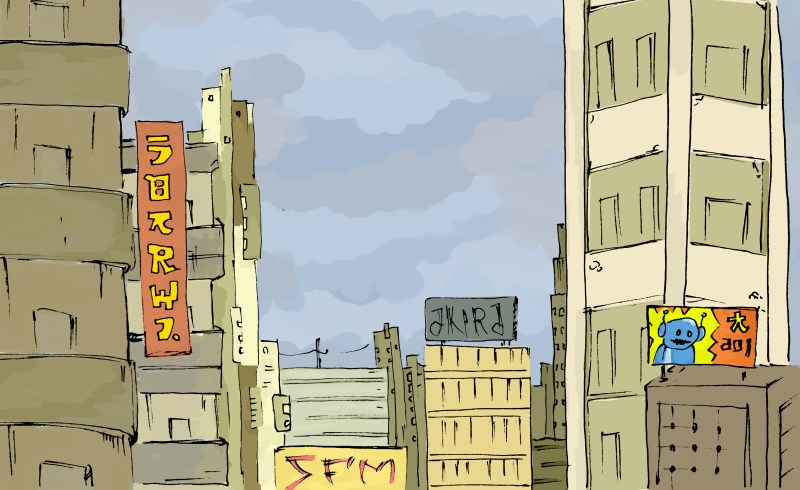
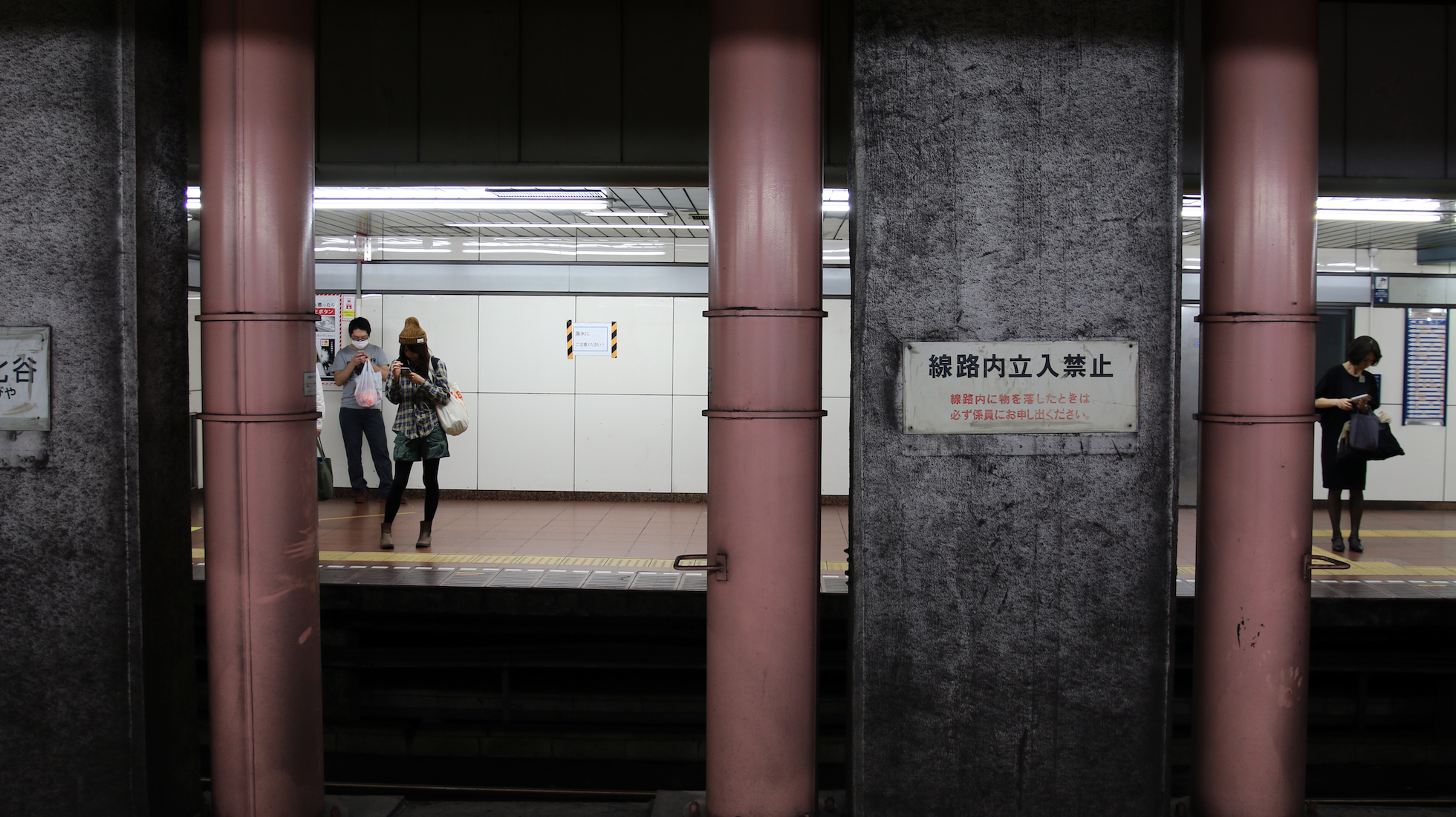
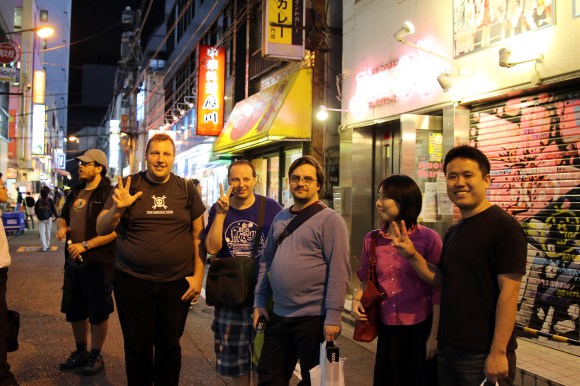
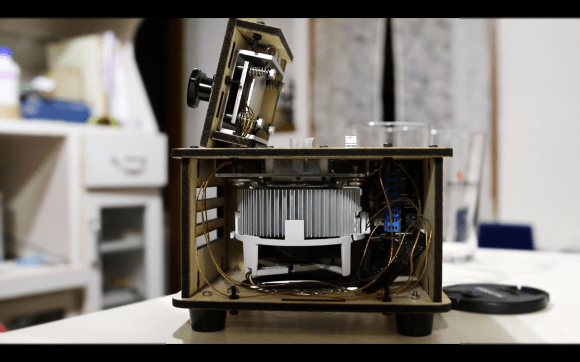

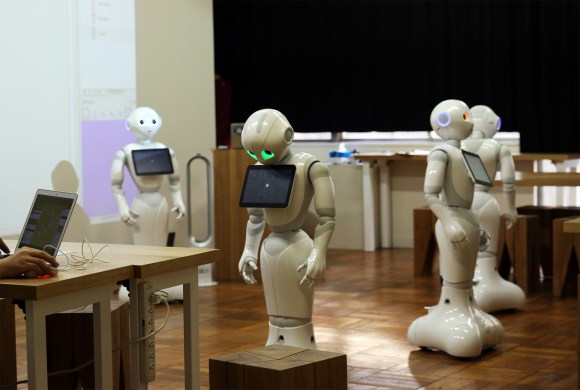















Did taykan get a haircut?! :P
Yeah, just a bit during holiday but it’s growing back. :)
Don’t forget to check out Robot Restaurant in Shinjuku.. You’re welcome in advance.
Also the Japanese train system is very linear and fairly straightforward to understand, however if you get stuck (say on a non JR line) you can always use HyperDia (www hyperdia dot com) and navigate anywhere from whatever eki you are at.
Enjoy the beauty that is Japan including the lot of random passed out salarymen that you are no doubt to uncover walking around in the morning.
Miss that place… Need to plan another trip.
Any more info on where to get cheap tickets? Is there a pattern? Times of year? Better airports to go into or leave from? (I’m US west coast-ish), etc?
I’m lucky to have had the change to go there, but I want to go again!
Eh, standard travel rules apply (go during off seasons) but YMMV. I found a decent deal on Expedia in 2012 – 3 weeks at the Hilton + Air from the east cost for two for 5 grand. Of course the Yen to USD was crap so we more than made up for it.
Generally speaking avoid Golden Week at all costs (Late April-Early May) and the same for Obon (early August) as those two holiday periods are when travel skyrockets More so a concern for international travel during Obon as it is peak time for people travel to see their relatives.
Just keep checking the various travel aggregators online or volunteer to travel for work and earn miles on their dime.
Five grand? Welp, there goes the possibility for 90% of us.
Hell, that is almost enough for two semesters of textbooks! (almost but not quite sarcasm)
Already paid my dues on textbooks – in my mid 30s and my wife and I are DINKS (dual income, no kids) :-) Also keep in mind it was for 3 weeks at a Western style hotel. This past trip I went with a friend, stayed at budget hotels (I highly recommend toyoko-inn), and only stayed 2 weeks so my cost was much less.
Japan has a great number of hostels or capsule hotels in the $20/night range as well if you are traveling alone or are with adventurous friends. The JR rail pass, while initially expensive, pays for itself if you decide to travel a bunch as well.
You can price a decent trip for not much more than what a balcony/suite would cost for a 7 day trip on one of those Royally expensive Caribbean cruises if you plan it right- more so if you are willing to set up your home base in Narita and take day trips to Tokyo or wherever!
As another tip, you can literately survive off of food from 7-Eleven there too; there is a huge difference of quality between convenience store food in Japan and the US – no 5 day old taquitos and hotdogs.
AS for your final tip, YES YES. In fact, that is exactly what most singles do. Sure, a bit of cooking for your self here and there, or fast food.. but the vast majority of singles take meals from the convenience store or bento from a grocery shop 5 or 6 days a week. Get there before 9 and you will usually find a decent variety. And every shop has a slightly different “menu.” Very much unlikely to get sick off it either, even the sushi.
Bento and drink will range from 500 to 900 yen (less than $10)
Yeah. When someone says ‘cheap’, they typically mean 200-500 bucks per person or so, depending on the destination.
I spent three weeks traveling across Thailand, from the Netherlands, for about 1600 euro’s. Including accomodation, travel and some meals. And even that wasn’t terribly cheap, just affordable.
You could probably have also traveled 8 weeks for nearly the same budget. Some countries are really cheap.
Awesome!
If you’re ever in Osaka- go to Den Den Town, the smaller version of Akihabara.
I lived in Osaka for 1 of my years in Japan- Den Den Town is an awesome place.
There is at least 1 store there that sells nothing but old games and consoles- original
nintendo systems, NeoGeos, mint in box, walls of glorious 8 bit cartridges.
They even have a store that sells nothing but tubes. Nixies, vaccuum, you name it.
And of course, tons of maid cafes, and anime shops. It’s just like Akiba, but smaller.
Glad you guys got to enjoy Japan! I need to find Club Morga now when I go back, you taught me somethin. That place sounds crazy!
Not entirely sure how you would fall in love with an obscure manga in akihabara if you can’t read katakana or even realise that what you’re looking at isn’t katakana…
Nice writeup.
It sounds like the same type of feeling I’ve gotten from the city the few times I’ve been there.
Definitely the world I want.
actually living in japan and not just visiting for “48 hours” I would have to disagree with everything said, specifically the part about “For a geek building hardware, there’s hardly a better place to be”. For a geek buliding arduino shields using through-hole resistors from 3 decades ago picked up in one of the dying akihabara shops, maybe yes.
But for anyone who wants to make anything modern, either usa (next day digikey delivery) or china (shenzhen) is the place to be, not japan. japan has been and is dying and hasn’t been the place for making stuff or innovating for a very long time.
Got to agree with you! I’ve been in Tokyo for two years now, and getting parts or any fab work done is a huge pain in the ass. Also not that into anime/manga so Akiba is just annoying to visit. Long live the fax machine!
Ah, geeks have to have something to dream about. Leave our anime-heaven alone! If I want to live in a Tokyo with giant robot police, girls with pink hair (actually that bit happens), and Momus on TV every day in my mind, let me! I’m probably never gonna go there unless a land bridge forms from Europe. I know the rest of the world’s a miserable capitalist desert full of shit-throwing monkeys. Leave secular heaven alone!
The problem is some of the geeks, in particular the ones that use the label otaku, sometimes do end up here as English teachers… and usually they end up somewhere that isn’t Tokyo and then bitch and whine about the place being so horrible but don’t bugger off home until they can’t extend their contract any more.
@dongie
Marutsu parts’ online store has a lot of what you would want and they now have 250 yen shipping if the order will fit in a small box. chip1stop is more like digikey but I think you technically need to be a business to order from them.. being self employed is apparently enough though. Akihabara and DenDen Town are basically crap unless you want to pick up something that has been sitting in a box for longer than you’ve been alive or a raspberry pi but I think saying Japan is dead on the electronics front is a bit misleading.
Funny line, but yeah not true (dont know about DenDen, but at least in Akihabara). The key is to remember that “shelf stock is for newbs. The good stuff is for the asking.” Its like… the secret menu at In&Out.
The shops like Marutsu have these things called websites where they list what that have for sale. It’s not a case of having an “ura-menu” system where the good stuff is hidden from everyone but the most hardcore of customers.. the small shops they have in Akihabara (and for Marutsu at least around the country) have no way of stocking all the stuff they can potentially supply. They keep the pick up stuff on the racks and if you’re lucky they might have something you want in their stock at the shop but a lot of times they won’t have exactly what you want and you’ll have to settle for what is available.
I am not sure what “Tokyo” you two live in, but it seems not the same one as the rest of us.
While each of your comments has some shadow of truth to it, I think you are missing a LOT of things that make Tokyo, and specifically Akihabara, great for fab from hobbyist, to prototypes, to small scale production.
This is about to get long, so TL,DR: There are is a HUGE wealth of resources here, you just have to know where and how to look.
Lets start with the bad: YES, Akihabara has been diluted with maid cafes, manga shops, cheap consumer goods and a lot of PC parts shops (some would say that last one is not at all a problem). YES, the count on raw electronics parts shops has gone down, noticeable even in the 7 years I have been here. But several really GOOD shops still remain, and their combined square footage, selection of parts, and proximity to each other is rivaled only by Shinzen. Take it from people who live and work in Shinzen (Dangerous Prototypes). Perhaps one day in the past Silicon Valley was on par, back in the hardware days, but SV is pretty much all software these days. So, NO. The USA is not a particularly optimal place to do hardware. Especially if you live anywhere other than a huge city. I suspect a large part of your dissatisfaction with Akihabara as a resource has to do with language and cultural barriers.
RE online shops: Uhh.. herro! Digikey.jp has the same stock as Digikey.com, uses the same stock numbers (just search in the English site, copy and paste the stock number and complete your order) with next day shipping. Also there is RS components, a site not nearly so big in terms of inventory, but has virtually everything Digikey does not. So, on the valuation of ease to order parts, it is %100 percent equal. And, considering we are talking electronics and part numbers, the language barrier should not be that hard to over come.
RE Akihabara parts stores themselves and the lack of “modern” supplies
Total BS. But, perhaps you are not looking at the right places, dont know how to look, and are not asking the right questions. Let me explain:
I will assume that by modern supplies, necessary for fab work, you are referring to the following things: Solder paste and related SMD small run fab tools, SMD parts themselves, A wide selection of ICs in SMD, development tools such as debuggers and dev boards. All of these are easily found. You can even buy the SMD parts on reels.
Some of these shops are floor to ceiling with small bins, with only part number labels on the front. Since they are categorized by component type, you will find through hole just as often as SMD. You have to take the time to look, or ask. Marutsu has loads of dev boards and debuggers. Sengoku second floor carries some, but admittedly nothing like the stock at Marutsu. And in the case of Akizuki, what you see, is only 1/3 of the shop inventory. Most of the the SMD is in the back, handed out by staff, by asking.
These shop staff deal with hobbyists %80 of the time. Another %5 are tourists who wont buy squat. So, learning HOW to communicate with the staff effectively is key. The first time they see your face, regardless of it being a foreign or domestic face, they wont give you much credit. Especially if you walk up with the wrong sort of question. Ask for resistors and they will point vaguely at the shelf and walk away. Ask for an SMD resistor in an “American” package and they will point you to a chart which shows you how to convert it to JIS, and walk away. Ask for 10K ohm 0805 resisters and they will ask back if you want it on a reel or cut, or tell you they only sell reels, and give you the price. Transistors are another issue foreigners have. You have to do the cross referencing before you come. They wont do it for you. 2N2222 does not exist in Japan. There is only one shop that sells them, and only because foreigners keep asking for them.
You have to remember that nearly every customer is spending less than the price of a hamburger, and asking around for parts without being totally prepared by knowing precisely what you need is really mendokusai (as the Japanese say).
Regarding fabrication: Ok, here you have a bit of a valid point. There are several companies that do small to medium runs on PCB fab, and of very high quality. They deliver in less than a week on quantities up to 100. But the language barrier is a huge issue. Worse though is the pricing. Japanese companies and the older generation of engineers still romanticize the idea that “Japanese quality is best!” when in fact, it no longer holds the prestige it once did. For PCB work, I always get it done in China, for 1/3 the price, same quality (you CAN get better quality boards if you are willing to pay a bit, even from China shops). But, getting your boards made in China is true of MOST small fab runs these days is it not?
On the other hand, Japan has some REALLY GOOD equipment manufacturers, solder paste dispensing, pick and place and reflow equipment at affordable prices and suitable for small companies and home manufacturing.
And, if after all that, you still feel like Akihabara is missing something, DMM just opened a mega hackerspace there, equivalent to a Techshop for digital manufacturing:
http://thebridge.jp/en/2014/11/dmm-make-akiba
Bleh bleh bleh. You’re an English teacher right? Please try to keep the “I knows Japan better than you do because I can speak katakoto Japanese” insults to yourself.
No, I’m not. At least not anymore.
You should get off the “jump to conclusions” gameboard.
I don’t speak much Japanese honestly. Good communication skills have less to do with your knowledge of the target language and more to do with your approach.
In the case of moat shops, it can be hard to sift through 100s of little bins with little part numbers, and in the case of Akizuki, a lot of stock is in the back. You have to ask for some items.
But a part number is a part number and a schematic is a schematic. Write it down and show it to them. Learn 10 key words and phrases that relate to your business/hobby.
No idea what a moat shop is.
MoST.
Going to a shop and asking for something that is one word consisting of two kanji, some numbers and then a unit which is derived from it’s English name is not hard. I suspect if you go into Akiduki and ask for “juu kiro oomu rejisuta” you would get what you want… what if they bring out some through hole ones.. improvise and do some literal translation “ashi ga nai yatsu, maru hachi maru go” or something.
That doesn’t make up for the fact that you can’t go into any of the Akihabara shops and get anything but the most common model of AVR etc. Want a QFN package instead of a QFP? Unless it only comes in QFN you’re out of luck.
Do they have that mad thing in japan that they have in the US where the prices are shown before tax?